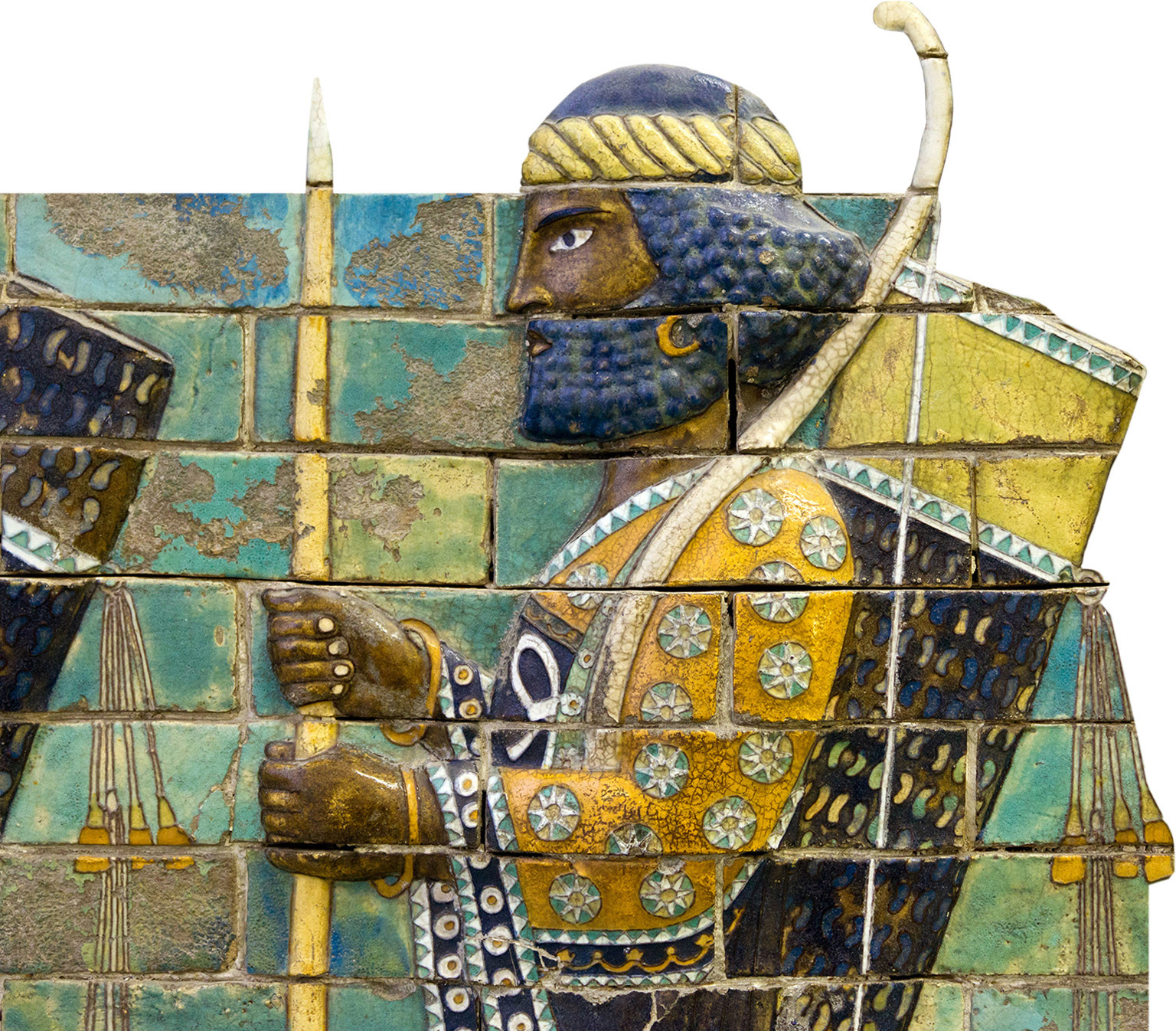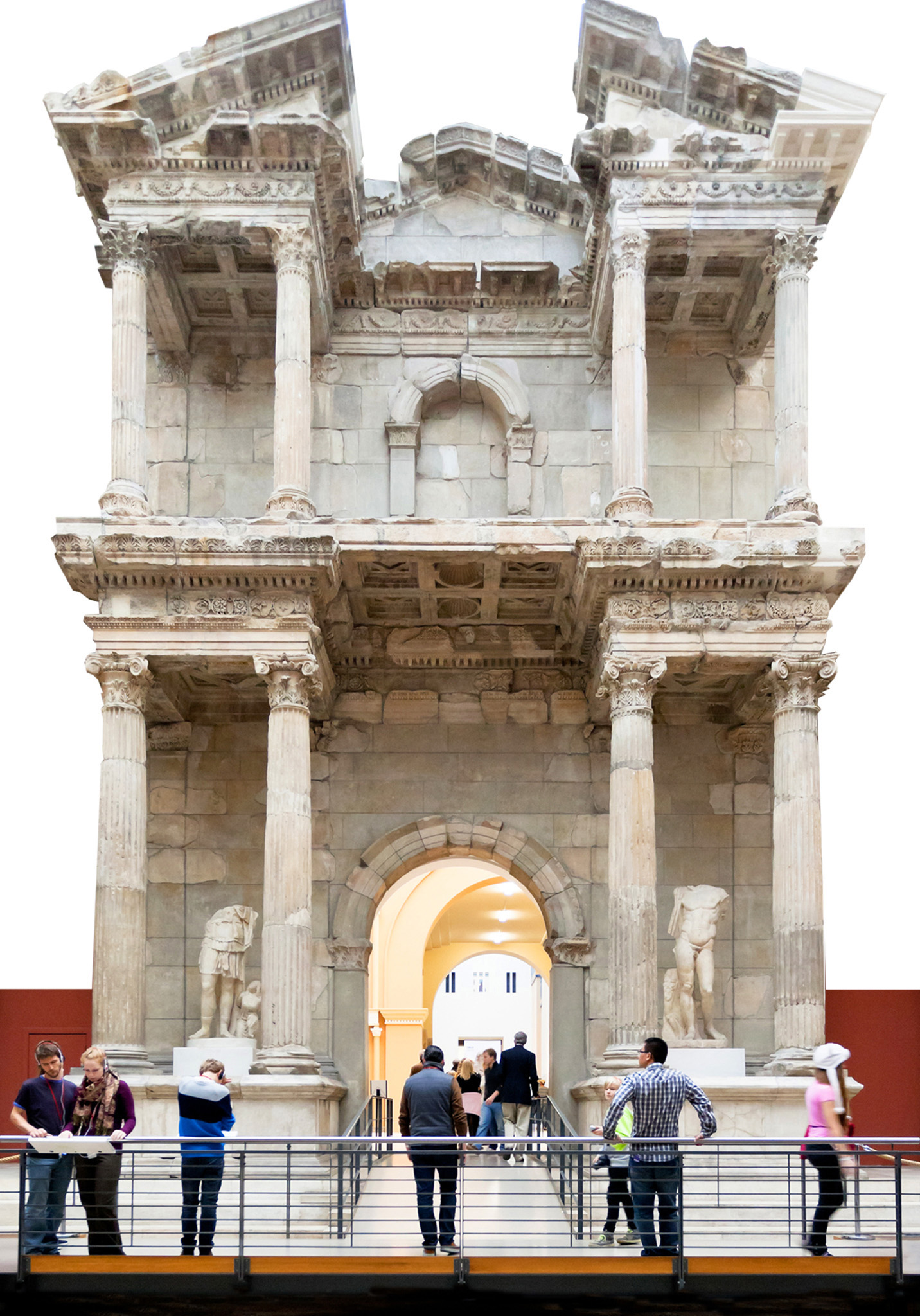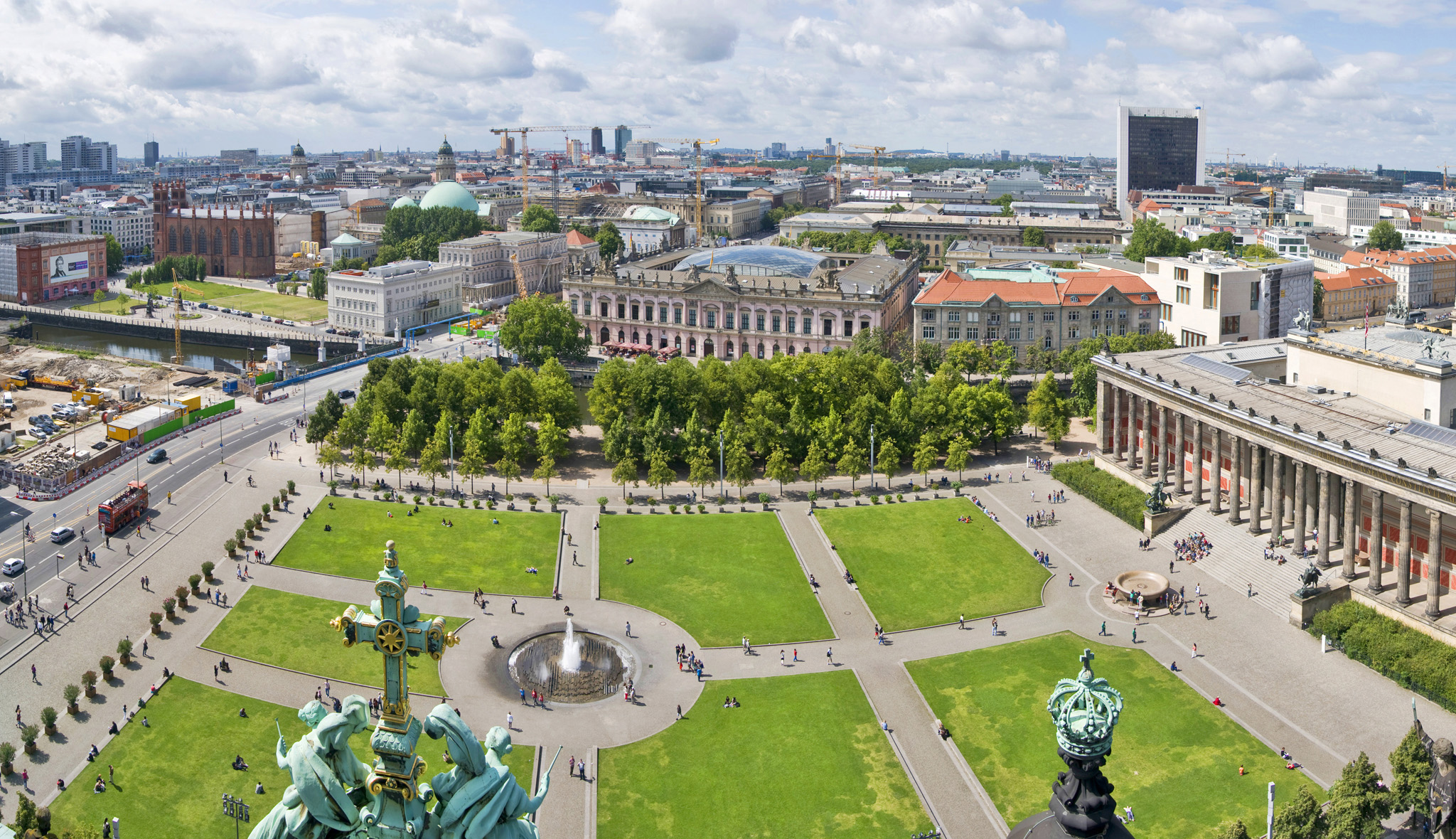PERGAMONMUSEUM
1. Frieze from the Palace of Darius
A frieze dating to around 510 BC from the palace of Darius in Susa (Iran) is made of exquisitely coloured glazed brick and depicts a row of Persian warriors holding lances and carrying bows and quivers.

Detail, frieze from Darius’s palace
2. Ishtar Gate
The Ishtar Gate, built under the reign of Nebuchadnezar II in the 6th century BC in Babylon, and the Processional Way are fully preserved. Original faïence tiles depict the sacred lions.
3. Market Gate of Miletus
This vast gate (AD 100) is over 16 m (52 ft) high. To the right of the entrance, a hairdresser has carved an advertisement for his shop into the stone.

Market Gate of Miletus
4. Assyrian Palace Room
The reconstructed room of the Assyrian kings’ palace (9th century BC) boasts impressive door figures and 13th-century BC wall paintings.
5. Pergamon Altar
The Pergamon Altar from the eponymous Greek city (in modern Turkey) dates from 160 BC and is the largest and most significant treasure in the collections of the Berlin museums. Closed until 2023, the altar can be viewed in 3D a building nearby.
6. Giant Sculpture of a Bird of Prey
The nearly 2-m- (7-ft-) high Riesensonnenvogel (huge sun bird) was discovered during excavations in Tell Halaf, Syria, the centre of the ancient Aramaic city-state of Guzana.
7. Aleppo Room
Taken from a Christian merchant’s house in Syria and dating from the early 17th century, this small room features magnificent wooden cladding and is a beautiful example of Ottoman architecture.
8. Mosaic of Orpheus
This delightful mosaic floor, depicting Orpheus playing his lyre amid animals enchanted by his skill, comes from the dining room of a private home in Asia Minor (AD 200).
9. The Mshatta Façade
A gift from Ottoman Sultan Abdul Hamid II to Kaiser Wilhelm II, this stone façade elaborately carved with arabesque and animal forms was the south face of a desert fort built in AD 744 in Mshatta, Jordan.
10. Victory Stele of Esarhaddon
This monumental stele, excavated in 1888 in Zincirli, commemorates Esarhaddon’s victory over Pharoah Taharqa (671 BC).
SAVING THE MUSEUMSINSEL
The island of museums is a treasury of antique architecture, but until recently it had been slowly decaying. Since 1992, however, €1.8 billion has been spent on the renovation and modernization of Museumsinsel. A master plan created by renowned architects that include David Chipperfield and O M Ungers will transform the complex into a unique museum landscape – just as it was first conceived in the 19th century by Friedrich Wilhelm IV, when he established the “free institution for art and the sciences”. Once completed, an “architectural promenade” will serve as a conceptual and structural link between various individual museums, except the old National Gallery. This promenade will consist of a variety of rooms, courtyards and vaults, as well as exhibition halls. The core of the complex will be a new central entrance building. The museums are gradually reopening after extensive individual renovations – the Pergamonmuseum is scheduled to be completed by 2025.

Visitors at the spectacular Neues Museum

The Altes Museum with the green Lustgarten in front
TOP 10 MUSEUMSINSEL EVENTS
1. 1810 Plan for a public art collection created
2. 1830 The Altes Museum, Prussia’s first public museum, opens
3. 1859 Completion of the Neues Museum
4. 1876 Opening of the Alte Nationalgalerie
5. 1904 Completion of the Kaiser-Friedrich-Museum (Bode-Museum)
6. 1930 Opening of the Pergamonmuseum
7. 1943 Bombs destroy most of the museums
8. 1958 Most museums reopen after renovation
9. 1999 Museumsinsel declared a UNESCO World Heritage Site
10. 2009 The Neues Museum reopens
